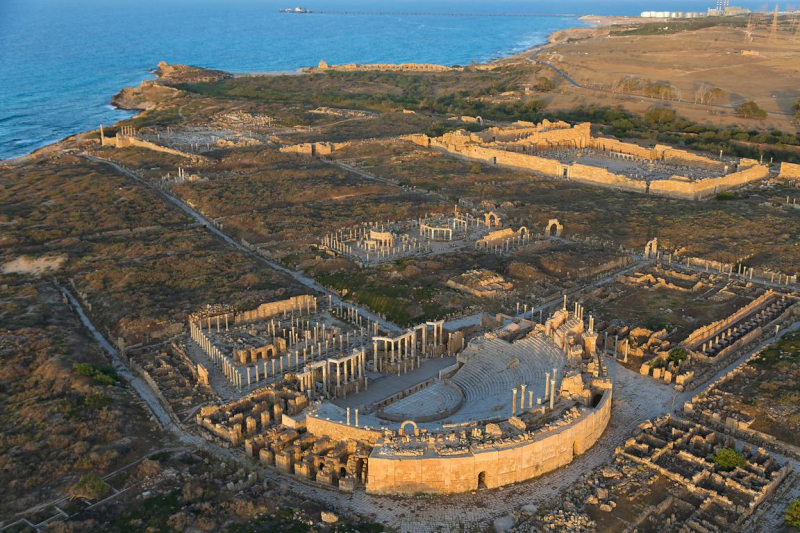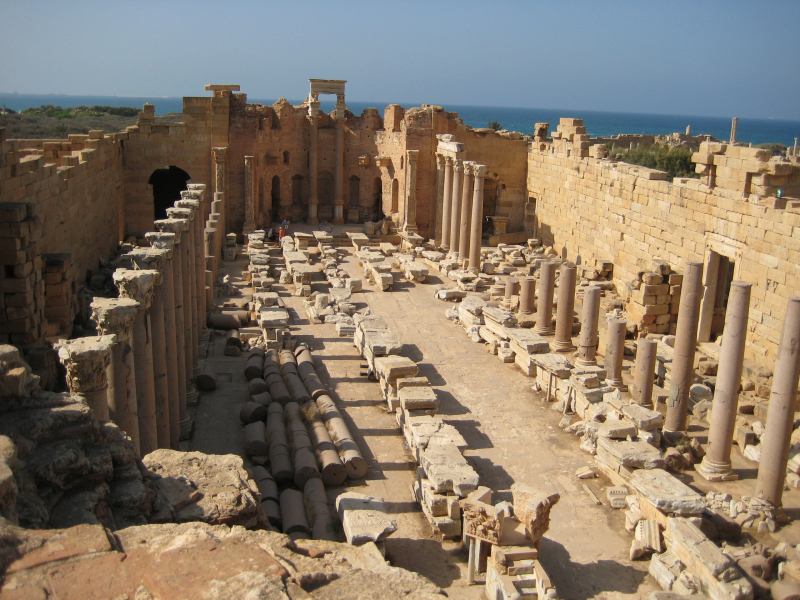Leptis Magna
At the mouth of the Wadi Lebda on the Mediterranean, Leptis or Lepcis Magna, also known by various names in antiquity, was a significant city of the Carthaginian Empire and Roman Libya. Leptis Magna is one of the best Roman amphitheatres to visit in the world.
The Roman Emperor Septimius Severus (193-211), who was born in the city, considerably enlarged the Phoenician foundation that had been there since the 7th century BC. To protect the city from Berber raids, the 3rd Augustan Legion was stationed here. The city became more vulnerable to invasions in the latter third of the third century with the collapse of the legion under Gordian III in 238. The city was made the provincial capital once again by Diocletian, and it enjoyed newfound prosperity until it was conquered by the Vandals in 439. Although it was once again a part of the Eastern Empire in 533, Berber incursions continued to haunt it, and it never regained its former prominence. In the wake of the Muslim invasion in around 647, it was abandoned.
Despite the several invasions that Leptis Magna experienced beginning in the fourth century and ending with the Hilalians in the eleventh, these sites can still be seen there today. Leptis Magna is now recognized as a UNESCO World Heritage site.
Location: Khoms, Libya











